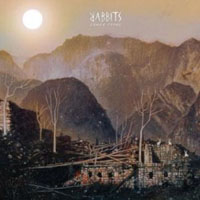 Melvins: The Bride Screamed Murder (Ipecac, 6/1/10)
Melvins: The Bride Screamed Murder (Ipecac, 6/1/10)
Melvins: “The Water Glass”
[audio:http://alarm-magazine.com/wp-content/uploads/2011/07/melvins_thewaterglass.mp3|titles=Melvins: “The Water Glass”]Last year, sludge-rock band the Melvins released its 20th album (and third since linking up with Big Business members Jared Warren and Coady Willis). That album, entitled The Bride Screamed Murder, is emblematic of what the band has done its whole career: tweak its signature sound — part anthemic classic rock, part avant-garde heaviness — to present something entirely new yet quintessentially Melvins. That willingness to shake things up has been a major factor in the band’s longevity.
After last year’s release, the band undertook a tour in early 2011, playing a different album from its back catalog each night. As the saying goes, you get what you give, and in this case, the Melvins’ 30-year history of experimentation has continually rewarded the band with new experiences. Dale Crover, drummer and founding member, recounts the band’s some of the most memorable recent experiences below.
Endless Residency Tour
by Dale Crover
The Melvins did a residency every Friday night last January in Los Angeles. To make each show unique, we decided to play a different record from our ever-growing catalog of releases. It seemed to go over really well, and since we took the time to learn all these records, we decided to take it on the road. Here are some highlights from the “Endless Residency” tour.
Austin Texas: Austin shows are always great, except for the heat. It’s 100 degrees out, and of course we’re playing outside! The show goes well, but by the end, the “costume” that I’m wearing feels like a soaking-wet sleeping bag. The next day we meet up with our friends from the band Honky to get lunch. Everyone I know that lives in Austin says that the BBQ downtown is average, and they know where the best is. We drive miles out of town to a place in Spicewood, Texas, called Opie’s BBQ. We’re greeted by a guy who opens a large trough with 10 different kinds of smoked meat. We let the Honky boys order for us, then sit down to stuff our faces. It was certainly worth the trip, and I highly recommend the spicy corn! After the feast, we stop by Willie Nelson‘s recording studio. Honky just recorded there. No Willie, but we got the full tour, including seeing the tape vault with Red Headed Stranger master tapes! I was also highly impressed by the nine-hole golf course next door. Maybe we’ll do our next record there!


























